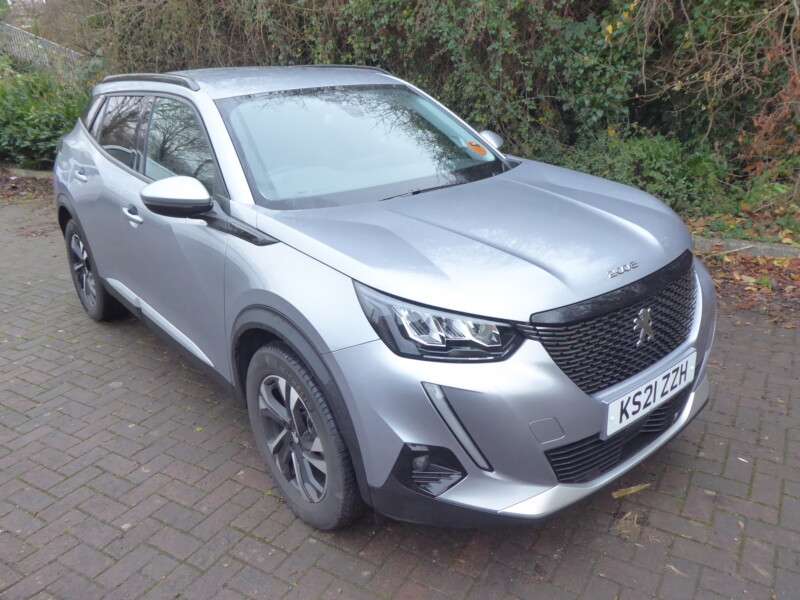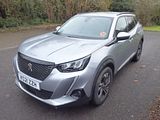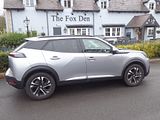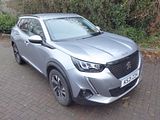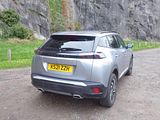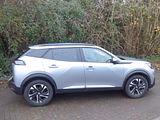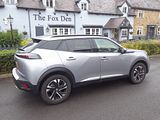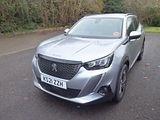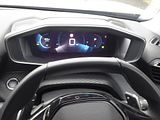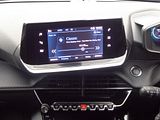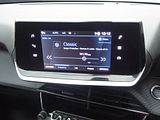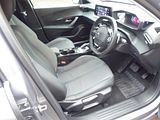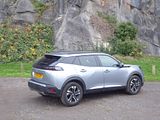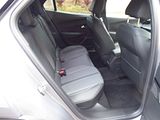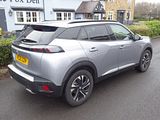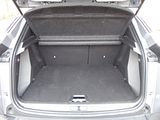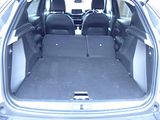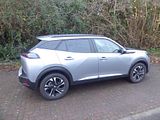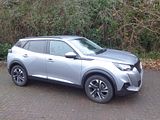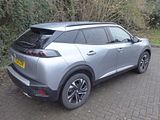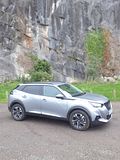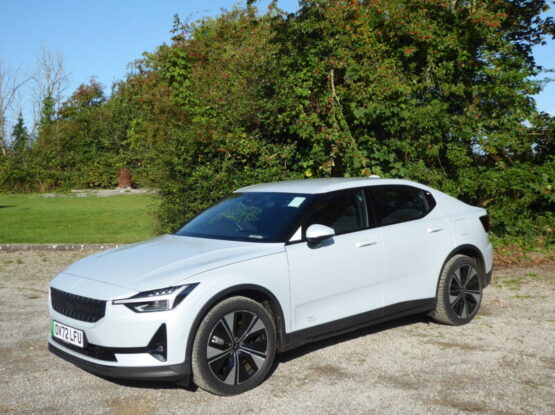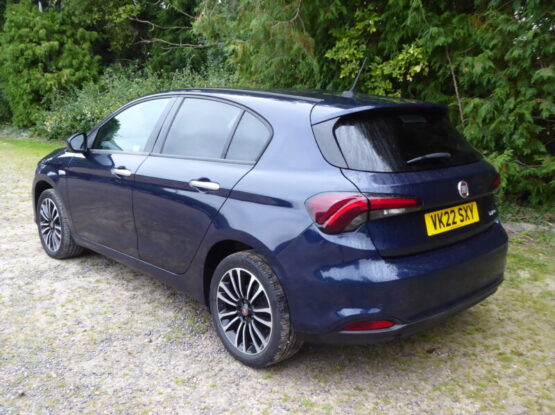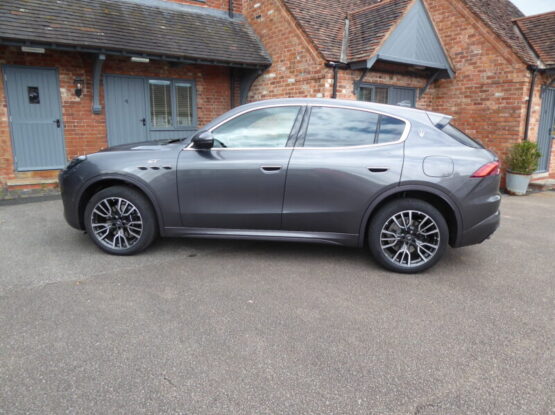Traditionally, Peugeot was the most conservative of the French car markets, producing a range of well-designed and nicely made cars that appealed to the bourgeoisie, for whom Citroen was too radical and Renault was a bit too, well, universal. An ever more diverse range of saloon and estate cars, augmented periodically by some stylish coupe and convertible models served the marque well, and even in what many think of as the malaise era when the styling was taken in-house and we were inflicted with such mediocrity as the 207. 307 and 407, sales remained buoyant. But it was clear that as we entered the twentyfirst century that tastes were changing and that the model range would need to adapt. Peugeot did not go down the MPV route, I you ignore the badge-engineered 806 and 807 cars, leaving that sector to in-house stablemate Citroen but the switch to crossovers proved too strong to resist so in 2010 we saw the brand’s first such car, the 3008, a model which I remember the stand staff at the Geneva Show where it was premiered telling me it was “beautiful”, an opinion to which I had to agree to disagree. A smaller offering was an inevitable follow-up, with the 2008 arriving in 2013, a few months after the regular 208 hatch on which it was based. Cited as also being a replacement for the 207 SW, the car found immediate favour and sales were strong, with many Peugeot fans moving to the new bodystyle and the car achieving conquest sales as well. There is no question that the Peugeot models of this era were immeasurably better both to look at, and to drive, than the previous generation, but they were still a bit too, well, ordinary. Something that Peugeot vowed to fix with a new design direction which was first evident when the second generation of their crossover cars appeared. The 3008 and related 5008 were first to go down this route, with a distinctive style and a real push for perceived quality that once again should have made them appeal to the bourgeoisie, if only such a sector of society still existed. It probably does not, in the same way, but this was a car that was designed to get closer to what is considered as “premium” without the badge heritage or the pricing, and the formula worked with the new cars selling strongly. So it was no surprise that the smaller 2008 would follow in very much the same direction wen the second generation model was launched in June 2019. Externally it looks not unlike the much-lauded larger 3008 and 5008 cars but under the skin, the 2008 shares its platform and many major components with not just the Peugeot 208 but also the DS3 Crossback, the C3 Aircross and even the latest Vauxhall/Opel Corsa and Mokka. The new 2008 was designed to be offered with both conventional petrol engines and also as an all-electric vehicle and there are no really obvious visual differences between the two. I did not get the chance to test the first generation 2008, but I have been behind the wheel of a second generation car now, thanks to a UK rental, not from Hertz, as they were charging ludicrous prices, both from Sixt. Let’s see what I thought.
As well as the tried and tested 1.5 litre HDi diesel unit with 110 bhp and six speed gearbox, there are three different versions of the same 1.2 litre THP PureTech three cylinder petrol engine available in the 2008, putting out 100, 130 and 155 bhp. The test car came with the middle one. There is quite an edge to the engine note, but unlike most of its genre, it is not that obvious that this is a 3 cylinder. It is actually a pretty good engine, one of the strengths of the car. It is surprisingly punchy and pulls well, and there is plenty of torque available, so mid-range acceleration is pleasingly strong. Once underway it is generally quiet, with noise sources well suppressed. It even proved decently economical, too. I covered 254 miles in my time with the 2008 and put in 28 litres to fill it, which computes to 41.2 mpg. Some contribution to this may come from the Stop/Start system, though I found this to be too aggressive, cutting out when you did not want it to do so, making the car hard to manoeuvre. The test car had the optional eight speed automatic transmission. Whilst this proved smooth in operation and generally well matched to the engine, it had its foibles, with the selector proving to be quite awkward. You need to push it twice to engage reverse and it was not always obvious that you had done so, meaning that this direction of travel was not then selected. There are paddles for changing the gears yourself if you want. The engine fires from a start button, and this was quite awkwardly placed.
Like so many cars of this class, this one is not really going to appeal to driving enthusiasts. The steering is very light, devoid of much in the way of feel, which while making the car easy to manoeuvre in confined spaces is rather unfortunate out on the open road, though it is no worse than most of its rivals in this respect. The car is predictable and safe on the road, of course, but push it harder and it understeers and there is some evident body roll, so this is not a car I could imagine you would take on twisty roads just for the sake of it. This version of the 2008 comes on 215/60 R17 tyres and the ride is pretty good. Whilst it is perhaps quite as soft and comfortable as was once the hallmark of a French car, it is still a lot more softly damped than many cars on the market which are just painful on anything other than smooth surfaces. This one is not, with a pliancy which is generally quite pleasing. The brakes proved powerful in operation. There is an electronic handbrake and this was often jerky to disengage, further adding to the difficulty in manoeuvering the car. Visibility generally presented no issues and there is a rear-view camera to help when parking up.
Peugeot made a huge effort to improve the interior quality of their cars in recent years and the 2008 shows the result. It is highly stylised and at first glance looks quite impressive, but try to use and there are lots of irritating ergonomics, and I don’t just mean the i-Cockpit with the high set instruments and low mounted steering wheel, which in this case, unlike previous Peugeot models I have driven which were so afflicted, was not a particular problem, as I could actually see the instruments. There is quite a mix of materials used, with plenty of soft touch surfaces, especially in the upper part of the dashboard. There is a nice leather wrapped wheel but sadly there is also plenty of shiny gloss black plastic and fake weave grey plastic which are rather less appealing even though every manufacturer seems to think that these are on trend and are what we all like. There are a series of pods that are used for the instruments, touch screen and the air vents. The instrumentation is all a bit odd. Everything here is digital and there’s lots of blue effect used, in a sort of 3D display. The instrument pack has several distinct layers, with a speedo, for example, reflected onto a screen from beneath – a bit like on a head-up display, just in the usual instrument position. The idea is that, thanks to a projector and various mirrors, the instruments are actually further away from your eyes than regular dials, reducing the time you need to refocus from the road. I was not particularly convinced by this, as all I noted is that the speedometer and rev counter are in shaded arcs at each end of the cluster and proved quite hard to read. Thankfully there is a central digital speed repeater. There are a pair of column stalks, but even these had their frustrations. The lights, with an auto function, operate from the left hand stalk, whereas the wipers are on the right. I found it hard to get the wipers right as they kept sweeping the screen even when I thought they had been turned off. The centre of the dash contains a 7” colour touch screen which is used for the audio functions as well as Apple Car Play and Android Auto. Apart from repeater functions on the steering wheel, this is the only interface for the radio as all associated buttons have been eradicated. Navigation needs a corresponding app on the phone to work, as I found when selecting that option from the menu. There is a speed limit recognition function but it seemed have something of a short memory. The system proved quite frustrating to use, with the challenges of complexity of menus and finding things that are common on so many cars these days. Beneath the screen and the central air vents are a row of toggle switches which comprise the buttons for the climate control system.
Seat trim would appear to be a mix of cloth inners and leather outers, but don’t be fooled, as this is what Peugeot call “leather effect”. Thanks to the i-Cockpit, you will probably need to find a different seating position from the one you would normally adopt. The steering wheel is set very low, so you can’t sit too high or it won’t clear your thighs, of course. There is plenty of space, with headroom in generous supply and the front passenger gets slightly more room thanks to the scalloped-away design of the dashboard. Seat adjustment is all manual, and the wheel does adjust a bit, though I would still like it to go far higher than it does. Nevertheless, I did manage to get comfortable enough.
There is a decent amount of space in the rear of the 2008, though some rivals do offer slightly more. For a car of this size, though, you probably get enough, though those with long legs may find their knees in the back of the front seats if they are set well back. Headroom is plentiful. The seats felt almost bucket like. There is a drop-down central armrest and there are map pockets and door bins for those bits and pieces.
Boot space is also class competitive, beaten by a few but also larger than many of the 2008’s rivals. It is a nice regular shape and there is a useful compartment under the floor if you position the floor so it is flush with the base of the tailgate. You can set it lower, which will give a deeper space to the main boot area. There is more luggage capacity available by dropping the asymmetrically split rear seat backrests down, which results in a flat and long load area. The load cover will stow under the adjustable boot floor. As with all right hand drive Peugeot models of the modern generation, the glovebox is rather poor, thus suffering in the conversion from left hand drive as the fuse box remains inside the area behind the lid. There are also door bins, both a lidded box and a useful recess in front of the gearlever and an armrest cubby which has a lift out tray in it. There are couple of cupholders in the centre console, one designed for larger bottles, the other for smaller cups and cans.
There are three main trim levels: Active, Allure and GT, with each offered in a standard and a Premium version. Not all trims are available with each engine output, as you might reasonably expect. The Peugeot 2008 Active comes with 16-inch alloy wheels, air conditioning, rear parking sensors, a leather-trimmed steering wheel, automatic LED headlights and automatic emergency braking with pedestrian detection as standard. You also get a 3.5-inch screen in front of the steering wheel and a 7-inch touchscreen infotainment system on the dashboard with built-in DAB digital radio along with Apple CarPlay and Android Auto smartphone mirroring features. Pick a Peugeot 2008 in Allure guise and you get 17-inch alloy wheels, tinted windows, black roof bars and black-painted door pillars. Inside, you’ll find leather-effect fabric seats, air conditioning, an adjustable boot floor, a widescreen digital driver’s display and a 7-inch touchscreen infotainment system on the dashboard with built-in DAB digital radio and Apple CarPlay and Android Auto smartphone mirroring features. Automatic emergency braking with pedestrian and cyclist detection is also fitted, along with front and rear parking sensors. High-spec GT versions of the Peugeot 2008 get 18-inch alloy wheels, a panoramic glass roof, a dark chrome chequered grille, tinted windows, black roof bars and black-painted door pillars. Inside, you’ll find partial suede-like Alcantara heated fabric seats, contrasting stitching, eight-colour customisable mood lighting, air conditioning, an adjustable boot floor and a wireless smartphone charging pad. You also get a widescreen digital driver’s display and a 10-inch touchscreen infotainment system on the dashboard with built-in DAB digital radio, satellite navigation and Apple CarPlay and Android Auto smartphone mirroring features. Automatic emergency braking with pedestrian and cyclist detection is also fitted, along with front and rear parking sensors, a reversing camera, lane-keeping assist, blind-spot monitoring and adaptive cruise control.
There are a lot of rivals to the 2008. Few of them have any real appeal for the enthusiast, but that’s not really the point, as these cars are largely intended to appeal to those who need practical, relatively affordable family transport. Many of the rivals are, frankly, really, rather dull, so plaudits to Peugeot for trying to be different. The bold styling outside, including some of the available colour schemes (perhaps not the great of the test car) and the stylised interior certainly do stand out. Whether that makes the 2008 the car for you or not really will depend on whether you can live with the still controversial i-Cockpit set up and whether those irritating ergonomics are just too much to face on a daily basis. I can quite understand that for some people these are non-issues, but for me, over a test of a few days, I was constantly wishing that Peugeot had not imposed them, so the 2008 would not be the car for me.

